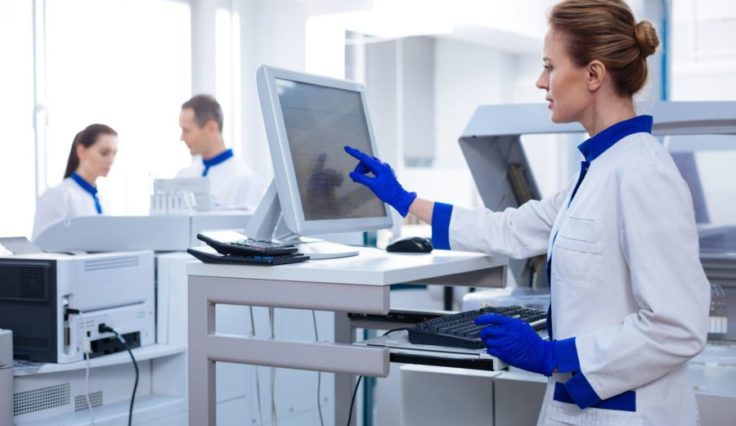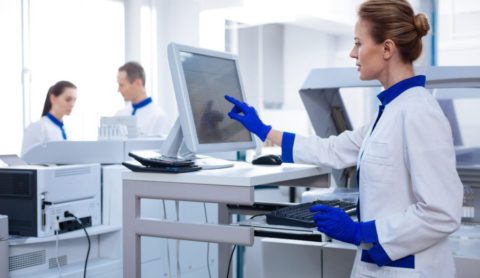A learning management system (LMS) can be a useful tool for employees in need of professional development and managers who need to track this development.
Every industry faces unique challenges in determining their LMS configurations. The life sciences industry faces especially unique challenges in configuring learning management systems to help train their users.
When discussing LMS configurations for life sciences, it is important to consider the learner’s experience with and attitude toward the system. A well-configured and integrated system is vital to learner success, and it can only function well if it is designed to complement and enhance the training that the learner will see. This statement especially applies to the life-sciences, where training connects to critical offline outcomes.
Life sciences training is often connected to a quickly growing field of knowledge and may face heavy regulatory scrutiny. When paired with the critical work done in the life sciences field, this makes LMS configuration and maintenance unique for life sciences businesses. Here are two examples of the ways in which configuring learning management systems for life sciences businesses can be unique due to the types of training required by these organizations.
Life sciences trainings are connected to critical outcomes offline.
When administering an LMS, it is critical to remember how the LMS fits into the routine of the end user. It can be hard to remember that an LMS is often a small piece of the end user’s professional life, and it needs to be configured as such. In the world of life sciences, a user may spend the bulk of their day on complex tasks like doing ground-breaking pharmaceutical research on a tight timeline. The last thing on their mind is completing training. This presents a critical objective for the business: creating a system that draws users in and integrates well with their professional routine.
While this objective alone is not entirely unique to life sciences, it is certainly distinct in how urgent it is to businesses in this vertical. The training offered to life sciences users changes often as discoveries are made in the user’s respective field. Failure to configure an LMS that provides meaningful connection with the user in a user-friendly manner can result in employees failing to keep up with changing knowledge in their industry.
The gravity of this outcome is heightened in an environment where the work being done relates to critical advancements in life science work such as veterinary research and pharmaceutical development. In the present, the importance of keeping up with changes in life science knowledge cannot be overstated, and a good LMS will assist a business in accomplishing this.
Life sciences businesses face higher regulatory scrutiny.
The life sciences face intense regulations, and this is for good reason. The business of scientific research and development is one with little room for error. The same can be said for an LMS designed for life sciences. This presents two challenges to a life sciences business. The first is that records of their LMS configurations must be well-kept, and the second is that the training offered to users must be tracked closely. The first challenge is slightly more straight forward, and can be addressed with good change control practices. The second challenge presents users with some hurdles. Similar to how life science training is connected to critical advancements in the field, the training is also often connected to strict regulatory requirements. For example, users may need to take laboratory safety training to qualify to enter their workplace.
Businesses in the life sciences can leverage LMS-specific solutions to address this critical requirement. Whether it be through a robust system of due dates or through more involved user communication and engagement, a life science business must give intentional thought to how their LMS can assist in keeping their business in line with regulations.
This is where end-user engagement is especially critical. If users have a negative experience with their LMS or are unaware of how to use it properly, an entire business can face regulatory risk. Therefore, a life sciences business must ensure their LMS is configured to complement the day-to-day structure of their employee’s jobs.
There are many ways to do this. Email notifications configured to fire in a structured cadence when action is required can help boost engagement. Similarly, a robust welcome page with clear access to training can ensure users don’t get lost and have a negative system experience. Both improvements will create a smoother user experience, and the user experience is critically connected to regulatory success.
Putting it all Together
Life sciences businesses stand at the cutting edge of critical research and development. This is especially clear in the present time. A field as different as life sciences will require an equally unique LMS. LMS configurations in the life sciences must place special emphasis on user engagement to keep users up to date in their field. With a well-configured LMS, a life science business will be empowered to focus on its work with an undistracted (and well-trained) workforce leading the way.





